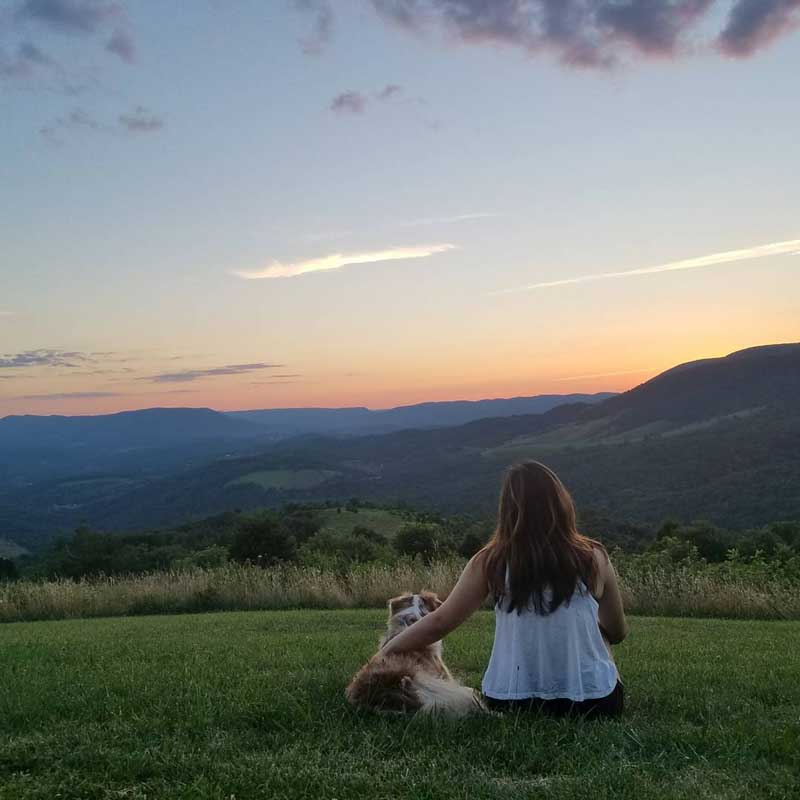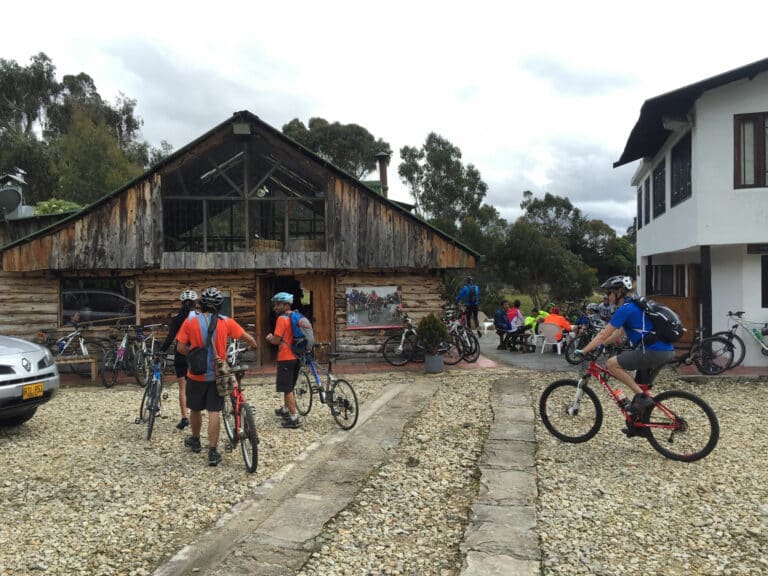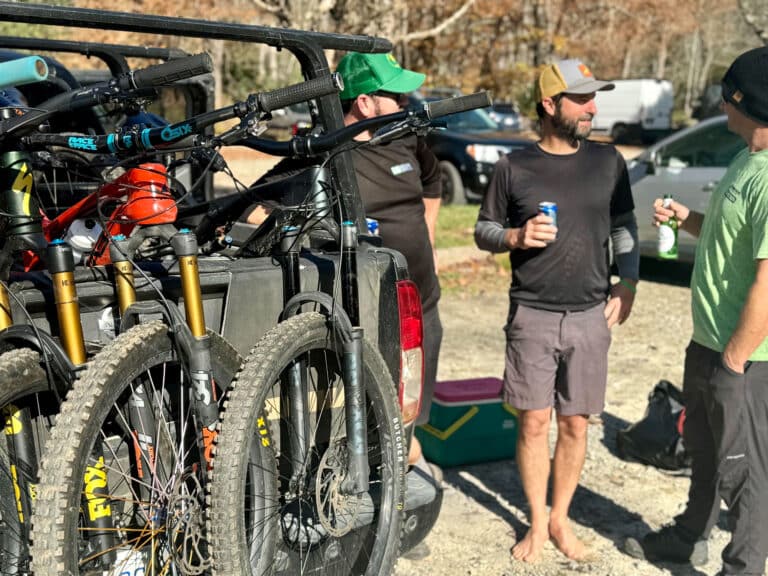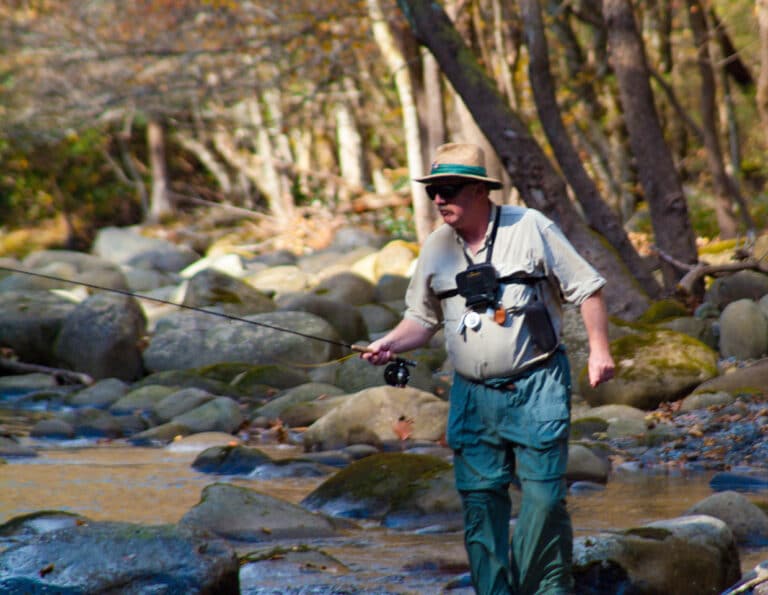Author Sarah Vogel on a hike. Photo credit: Ben Sarten
Part 1: Pura Vida
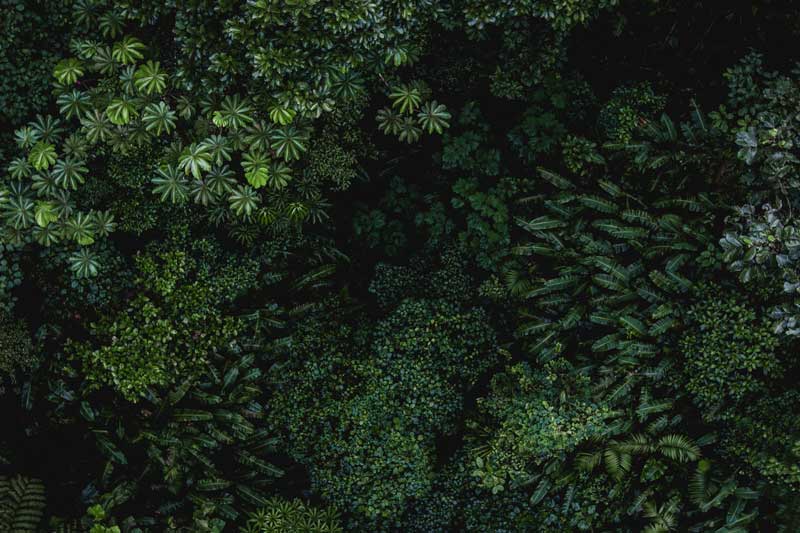
Photo credit: Isabella Juskova
“¿Cuál es tu trabajo?” Cocho asked me. What do you do for work?
It was a difficult question to answer, especially since my Spanish skills amounted to the capabilities of a toddler. Before I began traveling, I was a qualified mental health professional working as an intensive in-home clinician. My job was to help counsel families whose children were at risk of being removed from the home — for delinquency, truancy, substance abuse, self-harm, suicidal ideation, violence, and other challenges. This was well beyond my linguistic capacity to explain.
“Soy terapeuta.” I wasn’t satisfied with my imprecise vocabulary, but unable to do any better. I am a therapist. I shrugged, hoping this would suffice.
Before I could comprehend what was happening, Cocho was shirtless. He pointed to his back, looking at me expectantly.
Clearly, something had been lost in translation.
—
After two months of backpacking through Central America, my adventure had ended in a small town in Costa Rica called La Fortuna. Aptly named, it was a fortune of natural beauty teeming with aquamarine mountain rivers, thundering waterfalls, and vistas so green my eyes ached at the sight.
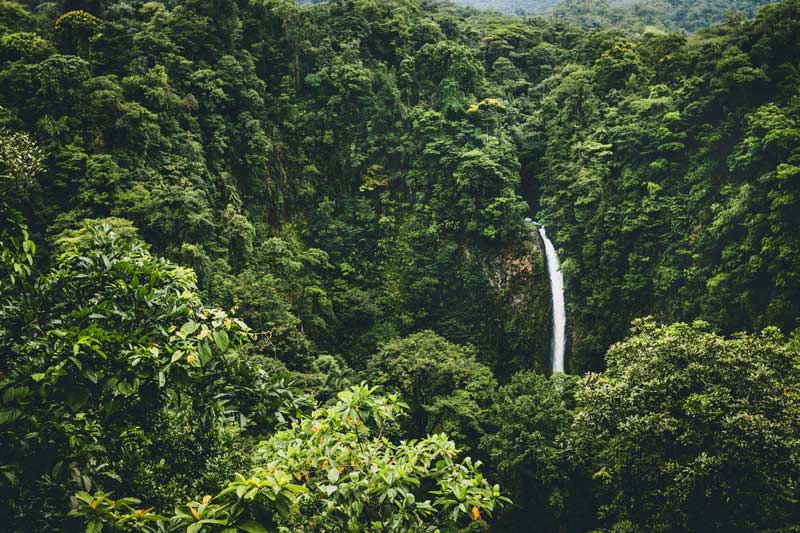
Photo credit: Isabella Juskova
I spent the morning of my last day on the bank of a local swimming hole, watching people more intrepid than I launch themselves from a rope swing into the churning plunge pool of a waterfall. A sudden commotion of excited voices pulled my attention to its source. My gaze followed the direction of fingers pointed upstream, disbelieving when I realized what the fuss was about. A lone kayaker was paddling slowly towards the crest the waterfall.
Hushed anticipation fell over the crowd and my eyes narrowed in skepticism. As if to prove me wrong, the kayaker lowered his head in determination, tightened his grip on his paddle, and propelled himself toward to what I assumed was certain death. My jaw dropped as his kayak plummeted over the edge.
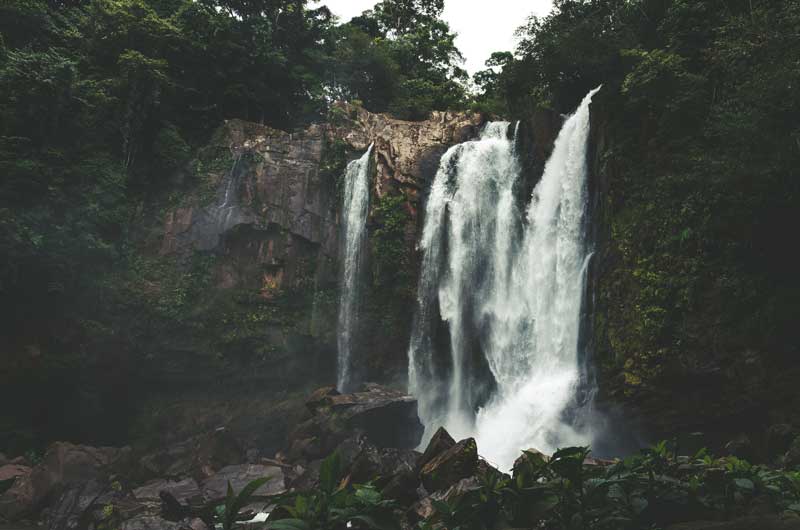
Photo credit: Hans Hamann
Though it seemed an eternity, merely a few seconds transpired before he broke the surface of the tumultuous swirl below. Shaking water from his helmet, he lifted his paddle in triumph. Applause and cheers erupted from his onlookers — myself included.
“Eres loco,” I told him when he pulled his kayak from the water. You are crazy.
He extended his hand. “Cocho Loco,” he introduced himself.
—
When Cocho discovered it was my last day in La Fortuna, he insisted that I see the places “not for tourists.” Places for ticos, or locals. When I learned that Cocho and his companion Luis were river guides I was eager to oblige. Who better suited to unveil the hidden gems of this already magical paradise?
Though communication was a painful struggle, Cocho and Luis were thrilled to share any information they were able about their beloved hometown. No translator was needed to feel their brimming sense of pride.
They took me to a local hot spring, insistent in its superiority to the one recommended by my hostel. They disparaged the other as an unnatural place, with spring water siphoned into manmade pools built specifically to attract tourists.

Photo credit: Anna Goncharova, courtesy of unsplash.com
“Esto es real,” said Luis. This is real.
After a trek through squelching mud that nearly claimed one of my sandals, we approached a wide and shallow river with gentle water bubbling over a bed of smooth stones. Steam rolled off its surface, as if it couldn’t care less that it lived in the balmy tropics. And despite the Costa Rican heat and humidity, the warmth of the hot spring was rejuvenating. I marinated in its essence until my fingers were reduced to pale, little prunes.
The rest of the day revealed more treasures — a secret cave behind a waterfall, terrifyingly beautiful cliffside landscapes, winding pastoral roads. Every place was hedged with a canopy of lush rainforest, overhung with creeping vines and glossy leaves of prehistoric size. Every manmade edge was overflowing with nature’s defiance, as if the pavement could barely beat back the wild.
__
The evening found us sipping beer on Cocho’s porch, making the most of our collectively lackluster language skills. And so, that’s how I found myself face-to-face with a shirtless stranger and hopelessly confused.
“Ayudame,” Cocho said, pointing again to his back. Help me.
Eyes wide, I looked desperately to Luis for clarification. “He wants masaje.” Luis pantomimed massaging motions with his thumbs.

Photo credit: Sarah Vogel
I laughed and tried to explain. “I’m not a massage therapist. Terapeuta psicológica,” I said, emphasizing the last word. Psychological therapist.
They were baffled. Cocho wordlessly pulled his tank top back over his head.
“I help people when they have problems,” I said, abandoning any further attempts at Spanish altogether. Their blank stares urged me to go on. “You know, when people are sad or angry.”
“Why are people in your country sad and angry?” asked Luis. Once again I found myself at a loss for an answer, but not for my failure as a translator. Even the English language lacked the words to express what seemed so obvious to me.
“You don’t get sad or angry?” I asked. Luis shrugged. Cocho was frowning now, his brow knit and eyes flitting between us as we spoke. Clearly, he too was struggling to understand.
Luis paused and looked at the sky, carefully choosing his words. “I love my job. I love my home and my country. I love my mother and my father. Why should I be sad?” There was a brief silence as the three of us sat with our confusion.
“Pura vida,” said Cocho, as if that would explain everything.
Though I had heard the phrase “pura vida” countless times since my arrival in Costa Rica, it was not an expression I had yet fully grasped. Literally translated, it means “pure life” — but it isn’t meant to be used literally. It can mean hello, goodbye, everything is good, everything is cool. Perhaps it is so difficult to translate because the literal meaning is less important than the spirit it conveys. Pura vida is an attitude, a way of life. It expresses optimism, gratitude, and respect for the wonders life has to offer.
“Sí!” said Luis, his eyes brightening with an idea. Abruptly, he took my hand and led me to the front of the house. “Mira!” He pointed at the horizon. Look!

Photo credit: Sarah Vogel
In the distance loomed La Fortuna’s most renowned natural wonder — Volcán Arenal. Standing in Cocho’s driveway, I stood side-by-side with my new tico friends in quiet wonder. The sun had dipped behind the summit, illuminating the wispy clouds with a cerulean and lavender glow. A fragrant breeze filled my nose with the scent of wild orchids and my ears with the music of cicadas and birdsong.
Luis turned to me. “¿Pura vida?” he asked again, wondering if I now understood.
“Sí,” I nodded, “Pura vida.”
—
Now, I’m not naive enough to believe that the entire nation of Costa Rica is without need of mental health treatment. But this exchange was so perplexing to me that it lingered on my mind the next morning as I waited to board my flight back home. My struggle to communicate with Cocho and Luis had not been for lack of words. It was for lack of an entire concept.
In America, I see depression, anxiety, anger, and pain. Though often covert and buried, mental and emotional anguish seems a pervasive undercurrent in our collective culture. According to the National Alliance on Mental Illness (NAMI), 44 million Americans (nearly a whopping 20% of the population), experience mental illness.
After my visit in Costa Rica, I researched the statistics. Costa Rica ranks number one in the world on the Happy Planet Index (HPI), a calculation based on resident self-reports of wellbeing, life expectancy, social inequality, and ecological footprint. According to HPI, with its top ranking, Costa Rica is the world leader in “achieving long, happy, sustainable lives.”
It’s worth noting that Costa Rica scores particularly high on the HPI due to its low ecological footprint, compared to the 2018 World Happiness Report (based solely on self-reports of well-being) where it takes 13th place. But it still ranks significantly higher than the United States, which has dropped to 18th place.
Costa Rica’s long-standing and progressive conservation efforts have earned global recognition. Over a quarter of its land is protected by national parks, wildlife refuges, marine sanctuaries, and reserves, making it the largest percentage of protected areas in the world. Home to thousands of species, Costa Rica contains 5% of the world’s biodiversity despite having only 0.03% of the world’s landmass.
To me, it is no coincidence that this tiny, green country has become famous for both its incredible natural resources and its happy residents. While I came away from Costa Rica with an appreciation for its transcendent beauty, I realized this nation offered something even more powerful: a glimpse into a world that refused to glorify consumerism, money, and industry at the expense of its natural treasures. And it seems that refusal has paid itself off in the health and happiness of its people.
Pura vida. Pure life. Gratitude for the wonders all around us. Undoubtedly, America has some of the most beautiful natural resources in the world, especially here in the heart of Appalachia. I wanted to know if we could tap into this powerful ethos. And I was going to find out.
